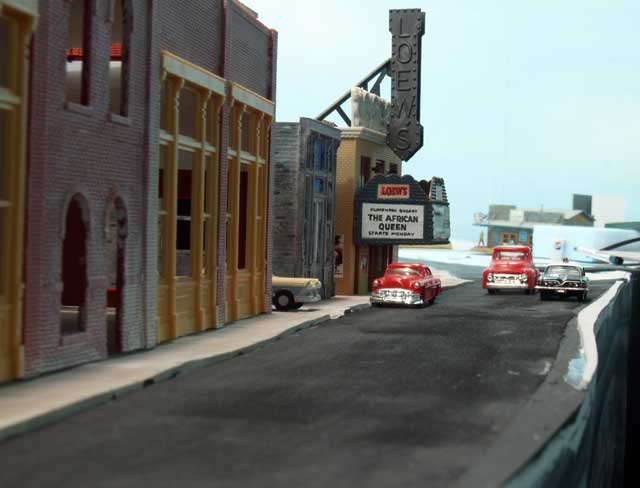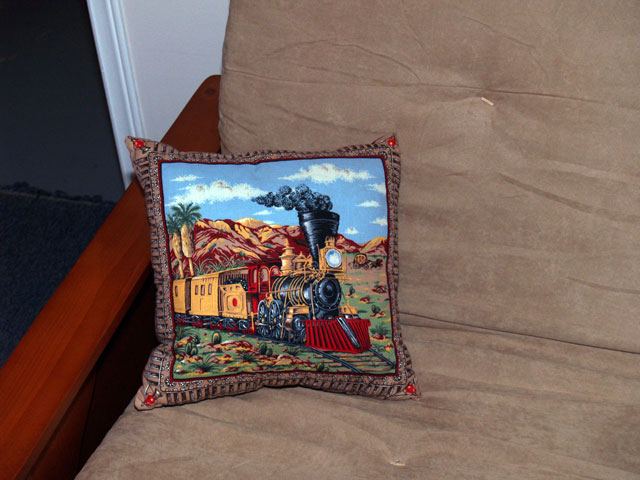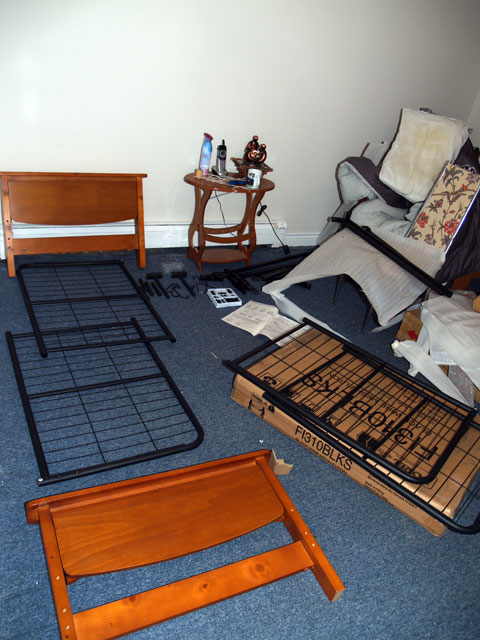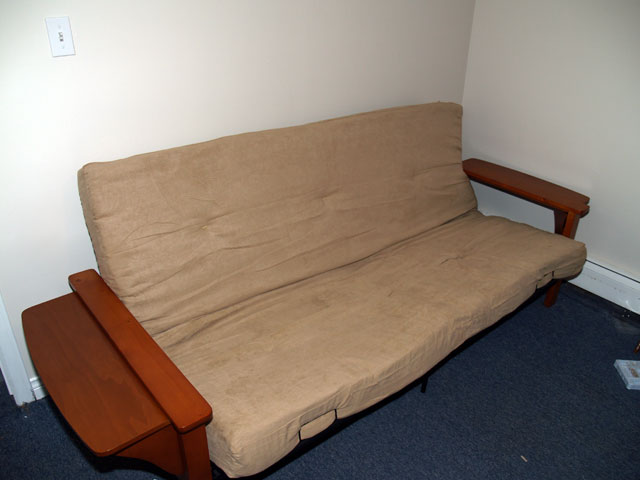I thought it might be nice to take a look back and see how Stevenville has developed over the last year and a half, or so. Well, that turned into a very long post, so I’ve condensed it into the Readers Digest version. It’s still a long post though. I’ll update this post every month or two with photos of new work
March 2006
This is the very first photo of the Stevenville area. I’m not even sure if I had named the town at this point. I certainly had no idea what it would eventually look like!
April 2006
A little more than a month later. We’ve had our first operating session on the layout, only two months since starting work tearing down the old layout. I unpacked all the structures from the old layout and have them distributed around the room, but it’s a pretty meager assortment. The old layout was only about 1/3 the size of this one so it’ll take a whole lot more buildings to satisfy the local real estate market.
May 2006
A month since the last photos. G-Mac Transfer (the blue building near the center of each photo) has been movd from Chappellton to try to balance out operations. Other than moving structures around there hasn’t been much done with scenery. I need to make sure the buildings are where I want them to be before I do too much else.
January 2007
There wasn’t a whole lot of new developments over the summer or fall of 2006. We still operated during that time, but there are usually other activities over the summer and fall that take time away from the layout. The guys were bugging me during op sessions about getting some scenery work done, to get rid of the “ocean” look of the blue foam. So after Christmas we postponed operating for a few weeks and went to town (almost literally) doing scenery work. You can see Derwin and Clayton in the photos above working in Stevenville.
February 2007
A month later and a lot has changed! Scenes are really starting to take shape. It’s amazing how quickly a layout changes when paint and ground covers start to go down. I made some foam block buildings ( in the background) to try to fill in some empty spaces. They don’t look too bad in pictures but not so great in person.
March, 2007
A little more than a month later. I’ve been working on other areas of the layout, so there haven’t been too many changes in Stevenville. I’ve done a little work around the Tenement and put together a fueling service kit, but not much else.
April 2007
In the previous month I’ve been working on other areas of the layout, but pop in to Stevenville every once in a while to do some work. These photos are some of the small scenes starting to develop in the town. You can see that the former Picard Packers factory has been moved into the downtown area to make way for a new factory.
May 2007
The big news during this month is that Picard Packers gets a new factory. The original building was moved into the downtown area a while ago and will serve as corporate headquarters.
November 2007
Again, during the summer and most of the fall work on the layout almost comes to a standstill. I’ve only recently started some new scenery on the layout. You’ve seen these pictures in my post on the latest operating session. I have done some work here recently.
Scott

















































